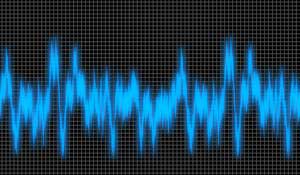Sound Facts
Posted by A. Douglas / in Science Facts
Sound waves are used for many things
Sound Facts
Learn interesting science about acoustics with these sound facts. A sound wave is a mechanical wave similar to water waves. There is a movement of matter when sound occurs, but the matter does not move from the sound source to where sound is heard. It is only a ripple of mater. In order for sound to occur a vibration is needed an a medium that can transfer the vibrations is also needed. Although we most commonly hear sound that is traveling through the air, sound can travel through all solids, liquids and gases. Find out more sound facts and science about sound waves.
- Sound waves are different from light waves because sound involves matter. Light waves have nothing to do with matter. Light waves are electromagnetic waves.
- Through the air, the speed of sound is very fast, but not as fast as the speed of light. Through the air, sound travels about 740 mph (1192 KM/hr). Light travels significantly faster at 670,616,629 mph (299,792,458 m/s).
- Sound waves travel through different materials at different speeds since it involves matter. Sound waves travel faster in materials with closer atoms. For example, sound travels about 19491 feet per second (5941 meters per second) through steel and about 4862 feet per second (1482 feet per second) through water.
- SOUND PITCH (FREQUENCY) - The frequency of sound waves can cycle slowly or cycle very fast. Sound frequency is also known as sound pitch. Although sound occurs over a much wider range, people can only hear sound frequencies between the range of 20 to 20,000 cycles per second. Sounds above this range or below this range still happen. Electronic equipment and some animals can hear sounds that humans cannot hear.
- ANIMALS USE SOUND CALLED ECHOLOCATION - Beyond normal hearing, some animals use sound to locate their position or communicate over long distances. This type of use of sound is known as echolocation. Animals such as bats, dolphins, rats and some types of birds and whales use echolocation.
Measuring Sound Intensity
We can also measure the intensity of sound waves in units known as the decibel scale. As more energy is used to create the vibration of a sound, it will sound louder to us. Commonly, sound levels are defined by a unit known as the decibel. The name "decibel" was chosen because it recognizes the scientific work in the area of sound by Alexander Graham Bell. The following equation is used to find the sound level in decibels:
![]() where Iₒ = the standard reference intensity = 10⁻¹² W/M²
where Iₒ = the standard reference intensity = 10⁻¹² W/M²
The measured intensity is calculated from the equation:
![]()
Our ears have a wide range of sound intensities we can hear. We can hear very low levels of sound. Some animals such as dogs, owls and cats can hear extremely low intensities of sound.
SONAR - SOund Navigation And Ranging
- SONAR – is an acronym that stands for Sound Navigation and Ranging. Ships and submarines use SONAR by sending out sound waves through the water. When a reflected sound wave returns to the ship or submarine, a computer calculates the location and shape of the object that reflected the sound waves by measuring the return time and knowing how fast sound travels through water.
- Submarines use SONAR to locate objects in the water for navigation and tracking. Submarines are able to use the sound waves to find obstructions in the water. Submarines also use sound waves to detect known patterns of the ocean bottom to help identify and confirm its location. A type of SONAR called passive SONAR is used to find and track other sources of sound in the ocean like ships and other submarines.
- Sonar is a technology used in fishing to detect large groups of fish. Fishing ships send out sonar waves to look for the position and depth of fish.
- Sonic waves are used by geologists and scientists to explore below the Earth's surface for oil and gas deposits. Using sound waves is a faster, less-destructive way for scientists to find valuable resources hidden below ground.
- Ultrasound waves, operating at a frequency of around 5 MHz, are used to create images of the human body. The most common use of ultrasound testing is to check growth and development of a baby before it is born.
- Ultra high-frequency sound waves at a frequency of 4.2 GHz are used in an acoustic microscope. An a acoustic microscope is an excellent tool for recording detailed images of surface coatings of materials.
Sound Inventions and Sound Technology
- INVENTION OF TELEPHONE - In October 1874 Alexander Graham Bell and his assistant Thomas Watson were the first to send a full range of sound electronically over a wire. His invention is known as the telephone. This breakthrough in technology allowed people to speak to each other from a long distance.
- INVENTION OF FIRST SOUND RECORDING - The first inventor to record and play back sound was in 1877. Thomas Edison and the scientists in his Menlo Park laboratory were the first to record sound and play the sounds back with his invention called the phonograph.
- INVENTION OF SONAR - Although the idea of detecting ships and objects in the water are likely as old as sailing itself, the first successful use of sonar was in April 1914. A U.S. Coast Guard Cutter was able to detect an iceberg over 12 miles (20 km) away. The sonar equipment was a large device developed by the Submarine Signal Company that could both send and received sound. The device used the difference in time from when the sound was sent to when it was received to calculate the distance of the detected iceberg.

Sound can be measured including this noise measurement.
